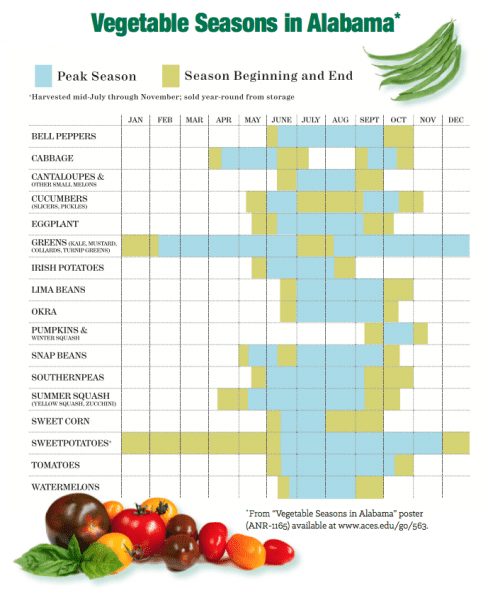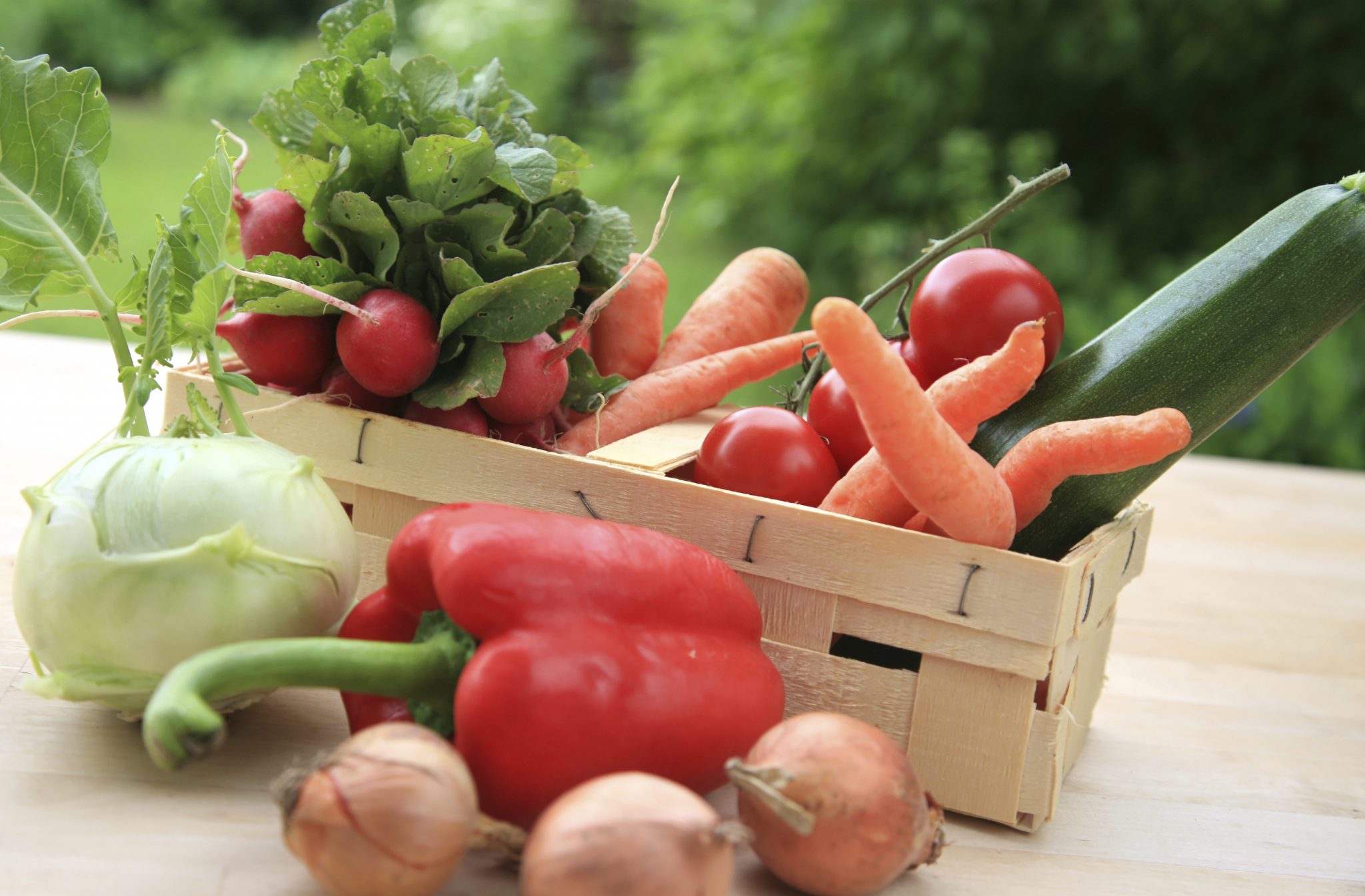Food Safety

Whether you grow your own produce or buy it at a farmers market or grocery store, fruits and vegetables are a colorful, tasty, and healthy part of our diets. The United States Department of Agriculture (USDA) recommends that we consume at least five servings of fruits and vegetables daily. A serving is any of the following:
- 1 medium-sized piece of fruit
- 1⁄2 cup fresh, frozen, or canned fruits or vegetables
- 3⁄4 cup fruit or vegetable juice
- 1 cup raw leafy greens
Buying Quality Vegetables
Choosing the best quality vegetables is important in maintaining taste and texture. Learning to choose the freshest vegetables will also ensure that you receive the maximum nutritional benefit from your selection. For the best quality vegetables and to avoid throwing away spoiled ones, select an amount that you can use in a short time. Follow these tips when choosing fresh produce and see table 1 for tips on selecting specific vegetables:
- If you’re picking your own, bring clean containers or bags.
- Exposing your produce to excessive dirt can cause premature spoilage.
- Look for produce that is free from unusual odors, colors, and mold.
- Handle produce gently to reduce bruising. Most produce has a natural coating that protects it from bacteria, but bacteria can thrive in bruised areas. At the grocery store, keep fresh produce on top of other foods in the shopping cart, and set it down gently on the counter when checking out.
- Be cautious of buying underripe produce. Some produce, such as peaches, cantaloupe, and nectarines, may soften during storage, but they won’t ripen.
- Buy cut produce that is refrigerated, and keep it cold during transport.
Storing Vegetables for Best Quality
Knowing which vegetables should be stored at room temperature and which do better in the refrigerator will go a long way toward maintaining quality. Many vegetables can change texture and flavor if kept too cold. For example, sweet potatoes take on off-flavors and a hard core when cooked after being refrigerated. Green tomatoes do not turn red, and red tomatoes will lose their flavor when kept in the refrigerator. Table 1 provides recommendations on the optimum storage temperature for common vegetables.
Cooking Tips
Whichever cooking method you use, remember that to ensure the best flavor, color, texture, and nutritive value, cook the vegetables until just tender. The less water you use, the more nutrients will be retained in the vegetable.
Baking. Vegetables such as winter squash, tomatoes, and potatoes can be baked whole in their skins. Other vegetables can be cut into pieces, seasoned, and baked. Place the vegetables on a pan and bake at 350 degrees F until tender.
Stir-frying. Stir-frying is best for tender vegetables that are high in moisture. Cut vegetables into pieces, and put into a frying pan with 2 to 4 tablespoons of oil and a small amount of water if needed. Cover the pan, and cook over low heat for a short time, stirring occasionally. Stop cooking when the vegetables are still slightly crisp.
Boiling. This method retains the least nutrients because they are washed away by the boiling water. Bring water to a boil. Add vegetable, cover, and quickly bring water back to a boil. Reduce heat and cook gently until just tender. Drain water, and season.
Steaming. The same as boiling except place the vegetable in a perforated container over boiling water. Because the vegetables are not submerged, more of the nutrients are retained.
Microwaving. Microwave cooking results in a texture similar to steamed vegetables. Cut up the vegetables. Microwave on high. Put the vegetables in a microwave-safe bowl. Lightly season. Add about 3 tablespoons of water to the bowl for every pound of vegetable. For corn, keep the husk on to prevent moisture loss. Microwave cooking times can vary greatly. Generally, firmer vegetables, such as beets or turnips, take longer to cook than softer, moister vegetables, such as broccoli. Microwave for 1 to 3 minutes; each minute after, check with a fork to determine when vegetables are tender.
Grilling. Put mixed, chopped vegetables in foil with seasoning and butter or place on a skewer. Put them on a section of the grill with low heat. If using a skewer, turn frequently to prevent burning.
Table 1. Selecting, Storing, and Preparing Fresh Vegetables
1 Some items usually sold whole
2 Average serving = 1/2 cup
Vegetable Seasons in Alabama


